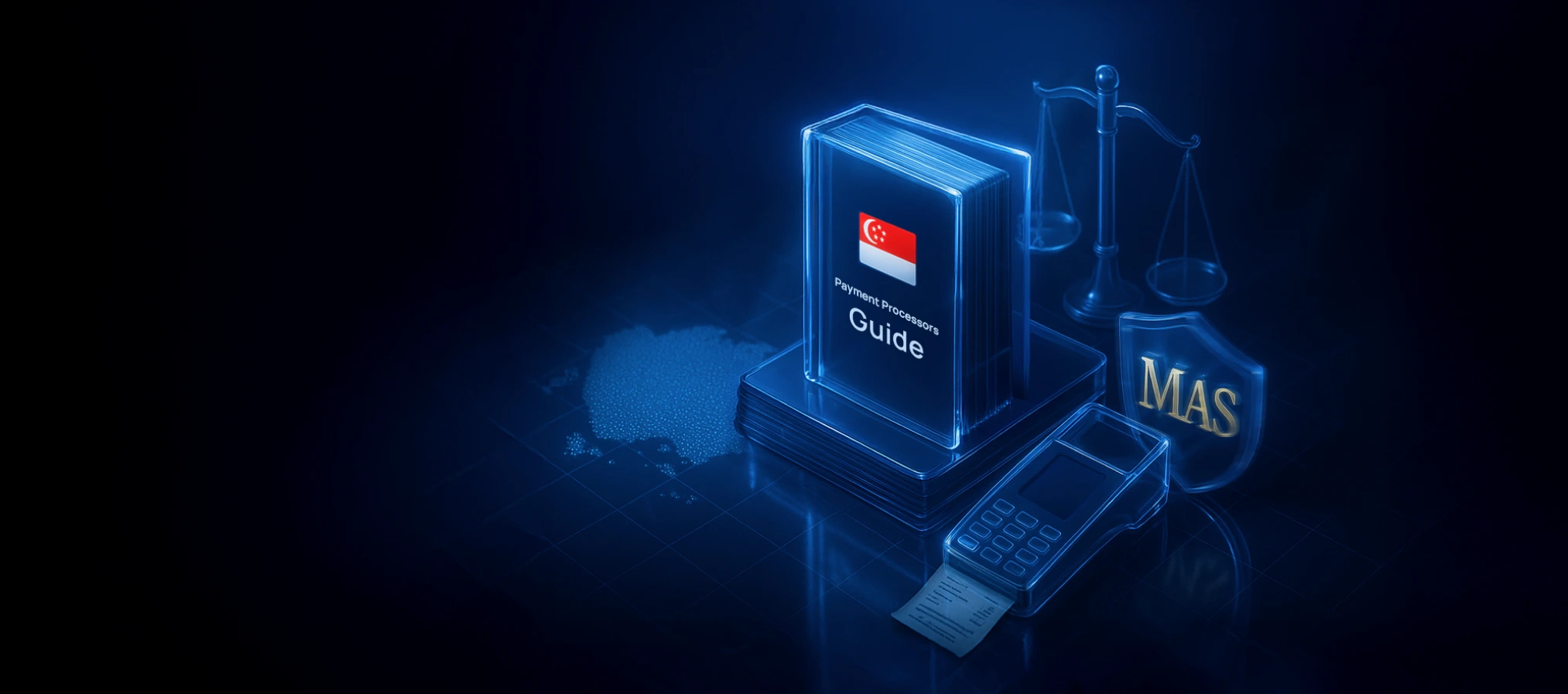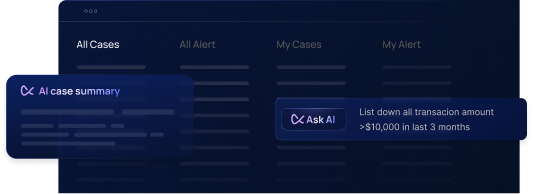Without a doubt, today's financial crime is harder to fight. Money laundering, terrorist funding, fraud, and other schemes have expanded in complexity and frequency in a digital-first economy, and regulators are cracking down on financial institutions that do not improve their fraud prevention procedures.
Financial institutions also risk losing their reputation, receiving financial penalties, and possibly facing legal action when they do not improve their AML transaction monitoring technologies and systems risk.
Modernizing AML compliance, on the other hand, demands a smarter transaction monitoring solution rather than more time, human capital, or finances.
So, what exactly is transaction monitoring and how does it aid financial institutions in their fight against financial crime?
Financial crime, such as money laundering and payment fraud, is on the rise, and it can result in not only huge financial losses but also significant damage to a financial institution's reputation. For banks, fintechs, and payment processors, the threat is especially serious, as these organizations operate at the core of the global financial ecosystem, including high-risk flows like remittances. A financial services provider's corporate brand is vital to its existence — and a reflection of its reputation — more so than in other industries.
Financial institutions throughout the world were fined more than $5 billion in 2021. Many of these violations might have been prevented if these institutions' AML efforts had been more effective and compliant. Transaction monitoring has become a vital process for risk and compliance teams in the financial industry as a result of alarming numbers like these.
Financial institutions must implement a method for monitoring suspicious transactions as criminals continue to utilize more complex tactics to circumvent security systems. Of course, this is no easy task, but it can and must be accomplished in order to combat today's sophisticated fraudsters.
AML activities in the past mostly consisted of sorting transactions at the conclusion of each working day. This method involved evaluating a customer's behavior to established money laundering patterns. Currently, customers can register an account, transfer funds, and close it all online in a couple of hours, much before traditional sorting could detect and alert them.
Real-time transaction monitoring can intervene and prevent this. However, it emphasizes the distinctions between money laundering and fraud. The current goal of AML surveillance is not to deter criminal conduct. Instead, the goal is to report suspicious activity so that financial investigators can track funds as they move between institutions.
What exactly is real-time transaction monitoring?
Real-time transaction monitoring is the process of analyzing customer transactions and behavior, which involves the investigation of past and present customer data and interactions to provide a complete picture of their activity, in real-time. Transfers, deposits, and withdrawals are all examples of this.
After that, a customer analysis can be performed, including risk levels and expected future activities.
At some point, you've almost likely been the subject of transaction monitoring. Have you ever received a call from your financial institution requesting you to confirm specific transactions? Because of transaction monitoring, your financial institution has a good grasp of what your regular financial activities are. If they notice unusual activity, they might contact you or report it to the authorities if suspicious activity is suspected.
Transaction monitoring is critical to a financial institution's AML policies since it can spot suspicious activity like large cash deposits or money transfers. As a result, transaction monitoring would enable organizations to detect financial crimes before they occur or at an early stage.
Additionally, transaction monitoring data is largely utilized to comply with numerous AML and counter-terrorism financing (CTF) laws, as well as to file suspicious activity reports (SARs) and other reporting requirements.
What are the benefits of real-time transaction monitoring?
To begin with, transaction monitoring is a vital first step in any financial institution's anti-money laundering and counter-terrorist financing protocols. Knowing how to recognize a suspicious transaction could prevent fraudsters from laundering hundreds of millions of dollars. A money-laundering scandal is the last thing any organization wants to be involved with.
Furthermore, having transaction monitoring in place provides confidence to regulators and financial partners. It demonstrates that a financial institution takes AML and CTF requirements very seriously and is doing all that's necessary to avoid criminal activity. This builds trust between potential and existing partners.
Financial institutions can also use transaction monitoring to implement a risk-based approach. This means that they can assess and manage their customers' potential risks. A customer's risk level is determined by a variety of factors, including their type of employment, country of residency, and so on.
After determining a customer's risk level, a financial institution can change the customer's monitoring. A low-risk client, for example, will not require as much transaction monitoring as a high-risk client. Some institutions will need to adopt a higher risk strategy for all clients depending on where they are headquartered and which market sector and products they offer.
The Financial Action Task Force (FATF) establishes guidelines for anti-money laundering and counter-terrorism financing processes and considers some of the following as factors of the appropriate scope of AML/CTF control system:
- The financial institution's customer, product, and activity records.
- The methods of distribution that are utilized.
- The range of a financial institution's operations, such as where it operates geographically.
- The company's size, scope, and complexity.
- The number of transactions and their frequency, etc.
Manual or automated systems, which is better?
Automated transaction monitoring outperforms manual transaction monitoring in every way. Attempting to construct a manual transaction reporting system is extremely time-consuming and costly. Individuals also have a considerably larger capacity for making mistakes than machines.
However, in order for automated transaction monitoring to be fully efficient, it must have a manual component. A monitoring software, for example, might flag a suspicious transaction for an employee to review and determine whether it is actually suspicious. To ensure that software is functioning correctly, actual people are required.
When implementing an automated transaction monitoring tool, false positives can be a problem. The system must be adaptable enough to suit different types of clients' rules. If the rules aren't correct, there will be too many false positives, resulting in a backlog of time-consuming work for employees.
A financial institution can either develop its own transaction monitoring software or use a third-party solution. When designing a solution in-house, it might be necessary to hire a compliance and risk specialist to help create an effective strategy.
There are a few things to bear in mind with everything that is designed. Because the requirements governing transaction monitoring are continually changing, a solution's flexibility and scalability are critical. It's also crucial to be able to produce an audit trail of all activity, to know exactly what's going on, and to demonstrate it to the appropriate authorities.
What is the process of using a real-time transaction monitoring system?
A real-time transaction monitoring system tracks every piece of data associated with a transaction and transmits that information into risk rules.
Following that, the system automatically flags or blocks suspicious actions such as:
- Sources of inbound and outbound funds are unknown.
- Transactions that exceed a certain threshold.
- Transfers beyond a certain value, whether domestic or international.
- Unusual account activity or transactions.
- Significant cash deposits or withdrawals.
The information for these flagged transactions is usually compiled into a suspicious activity report (SAR) file.
Is filing a suspicious activity report (SAR) important?
Suspicious activity reports (SARs) are official document files that alert financial authorities to possible illegal activity. They can then be used to flag transactions that appear suspicious, especially if a company or individual is suspected of engaging in fraud, money laundering, or terrorism financing.
As part of their regulatory requirements, many financial institutions are required to submit SARs. The Financial Action Task Force's International Standards on Combating Money Laundering and the Financing of Terrorism and Proliferation make it mandatory to report suspicious activities.
Individuals and organizations can face significant penalties if they disclose information to customers or fail to file a SAR. Law enforcement can use SARs to spot relationships and correlations in organized and personal financial crime. This allows them to predict criminal and fraudulent activity and intervene before it becomes a threat.
Barriers to setting up a real-time transaction monitoring system
Although transaction monitoring software is required by law, its effectiveness tends to divide organizations and risk management teams. This is due in part to the following factors:
- Resource-intensive: As your business grows, a real-time transaction monitoring system can help you analyze a great deal of data, but you'll still need a full-time risk management team to manually check warnings and provide reports.
- Added cost: Transaction monitoring software can be installed on-site or outsourced. Integrating, monitoring, and updating is costly in either case.
- Time-consuming: Monitoring a significant number of warnings might take a lot of time and effort from the compliance department.
How does Flagright monitor transactions in real-time?
Flagright has developed a proprietary system that helps financial institutions and startups, including digital banks and neobanks, adapt to changing needs while giving them all the fraud prevention tools they need, such as real-time transaction monitoring, customer risk scoring, KYC/KYB orchestration, sanctions screening, fintech licensing, advisory services, and even blockchain analysis. All pricing is based on usage, with no upfront fees.
Our robust transaction monitoring software focuses on analyzing user behavior by defining thresholds at the customer segment and risk profile levels using customizable rules. This approach helps avoid unnecessary suspensions, reduce false positives, improve user experience, and ultimately increase customer lifetime value (CLV), revenue, and profit.
Contact us to get started, or request a demo to talk about larger projects with more complex requirements.
About the Author
Joseph Ibitola leads global demand generation at Flagright, an AI-native transaction monitoring and AML compliance platform. He drives marketing strategy, campaigns, and growth initiatives that help financial institutions adopt stronger compliance frameworks and reduce fraud risk. With expertise spanning fraud prevention, AML compliance, and financial risk management, Joseph also develops thought leadership and educational resources that position Flagright as a trusted partner to the finance industry.




.svg)








.webp)












